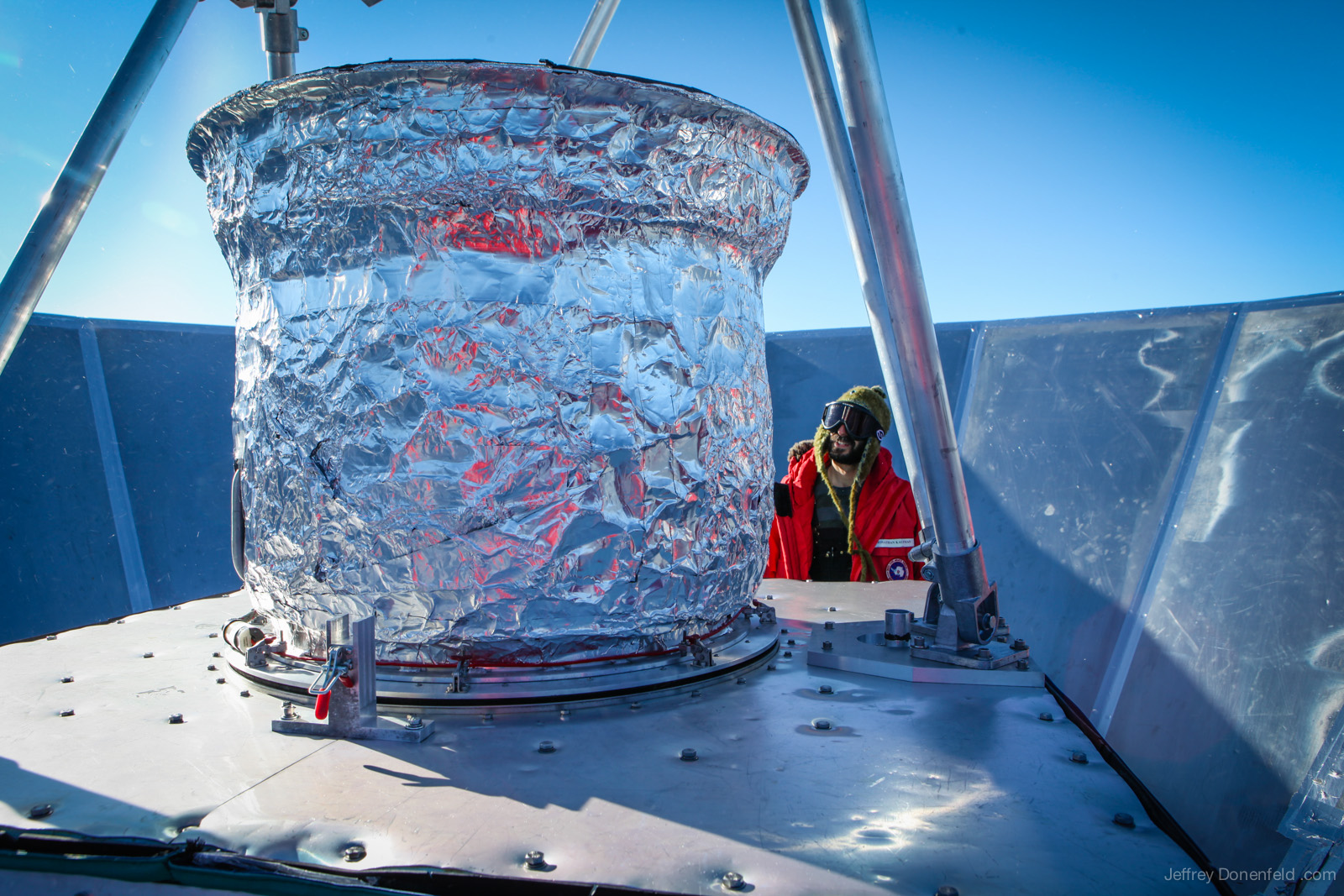A week or two ago, Physicist Jon Kaufman gave me a brief tour of the Bicep2 Microwave Telescope, operating here at the South Pole. Aa I reported earlier, the telescope operates at a very very low temperature – only a few millikelvin above absolute zero. In this particular telescope, to get down to that temperature, liquid helium is used in a series of nested cryostats – each reducing the temperature further. In order to maintain the cold temperature needed, liquid helium must periodically be added from an outside source. A few photos of Jon performing a recent refill of liquid helium:
Here’s what the master control console looks like.

Jon taking a few notes before beginning the fill

That grey puff coming out of the tip of the filling hose is actually liquid helium. Strangely, as we were working around the telescope as it was off-gassing lots and lots of helium, we could breathe in deeply near the vent hose (warmer, gaseous helium) and our voices would get high – just like sucking on a party balloon.


The exhaust hose gets so cold that it actually condenses gas from the air into liquid. That’s liquid nitrogen and oxygen (and a blend of others) dripping off the hose.

A quick trip up to the roof just to check things out on a nice day. This is a look inside the groundshield, at the moveable top of the telescope.



Comments
6 responses to “Refilling the Liquid Helium of Bicep2”
[…] [01:10:00] My friend Jeff is working in Antarctica. His blog and photos are awesome. […]
[…] Bicep2 Microwave Telescope
[…] Refueling BICEP2 […]
[…] fluctuations in telescopes. The group behind a BICEP2 telescope in Antarctica, for example, lugged glass helium to a South Pole, where it
[…] fluctuations in telescopes. The team behind the BICEP2 telescope in Antarctica, for example, lugged liquid heliumto the South Pole, where it’s already pretty cold—just not […]
[…] fluctuations in telescopes. The group behind a BICEP2 telescope in Antarctica, for example, lugged glass helium to a South Pole, where it